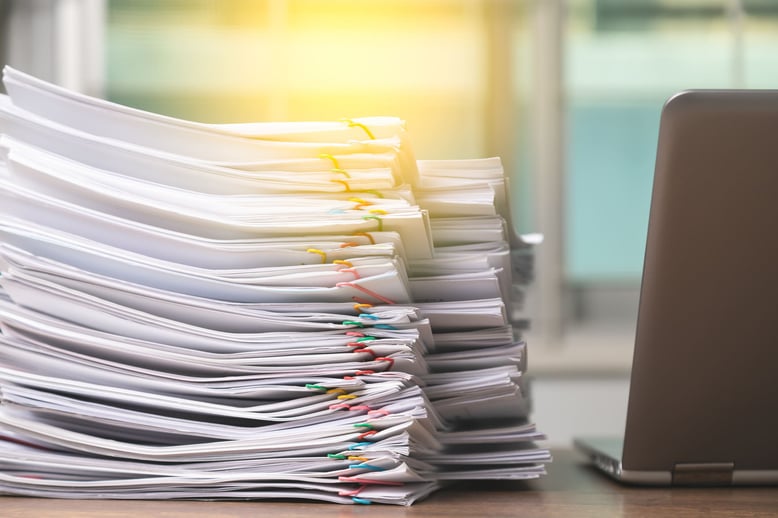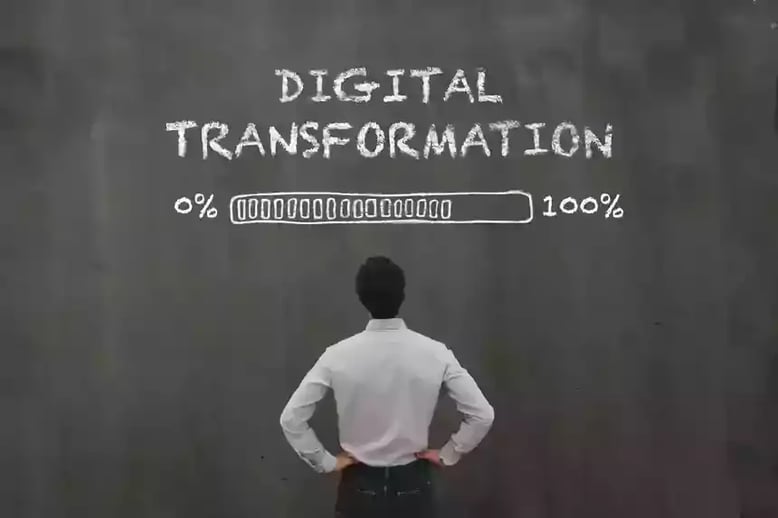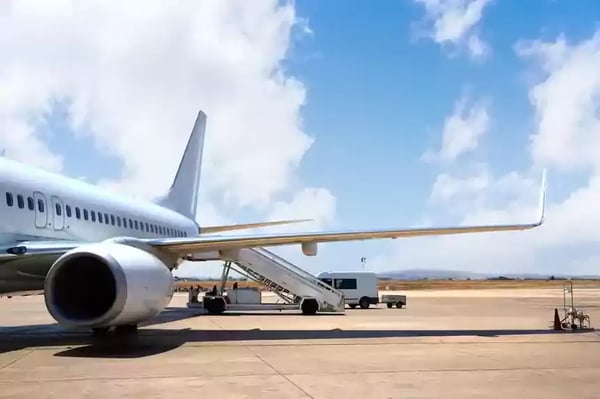How to move from paper to digital in the aviation industry?

Paper waste, sustainability and digital transformation - A powerful trinity
In an age where climate change becomes an increasingly alarming challenge for the world to face, the aviation industry encounters the urgent need to reduce its carbon footprint. Talks of sustainable airline fuel and more efficient aircraft engines take the spotlight when it comes to where the greatest improvements can be made. Still, there are some less obvious aspects of maintaining an airline where steps toward sustainability can be taken. One such aspect is paper waste.
With digital transformation shaping a new vision for the aviation industry, eliminating paper waste is a simple yet effective way to go green.
Transitioning to a paperless environment in aviation requires robust digital solutions, including comprehensive MRO software that manages documentation and workflows efficiently. For a closer look at how MRO software can facilitate a paperless shift, check out our guide on everything you need to know about MRO software.
What is digital transformation?
Digital transformation has become a buzzword within many industries, and for a reason. But what does it mean in the first place?

According to Quixy, it is defined as "the procedure of using technology to change and drastically improve how businesses operate. It involves integrating digital technology into all business areas, including strategy, operations, marketing, and customer service."
Digital transformation drastically improves the way businesses operate. For many, however, getting started seems to be the biggest hindrance. The processes can feel overwhelming, and it's hard to know where to put in the effort and where to begin. In 2024, a digital strategy is a must, and there might actually be a time when it's too late to get going.
There are countless examples of companies that ignored the possibilities of digitalization and stayed in their lane because things have always worked like this. One of the challenges of the modern world is the ruthless pace at which large companies can be disrupted into bankruptcy in a matter of years.
One of the most infamous examples is the Kodak bankruptcy. Once the leader in photography it failed to innovate in a time of digital photography and paid the price for it. Other examples include Blockbuster video rental that lost out to Netflix due to missing out on the customer demand to stream movies instead of renting.
Thus, if digital transformation is postponed, it might have severe consequences.
How do we start moving toward paperless aircraft maintenance?

Paper Waste
In an aircraft’s day-to-day routine, work orders must be signed for maintenance tasks to be completed coherently. Work orders are used to specify tasks that must be completed, keep tabs on maintenance progress, and track billable hours for engineers and managers. These pieces of paperwork, often spanning over a hundred pages, account for loads of paper waste in the aviation industry, especially since most work orders are single-use and become of little value to the aircraft once filled.
However, work orders are necessary to comply with MRO standards. There are regulatory, legal, and financial records that must be kept in order to maintain safety and fairness within the aviation industry. Work orders always have and always will be part of the aviation industry’s day-to-day process.
This is also just one source of paper waste in the aviation industry. Flight plans, aircraft blueprints, tickets, and much more account for areas where paper waste can be eliminated.
Digital Transformation in the Aviation Industry
With digital transformation shaping the aviation industry, opting for digital records over paper ones seems like a no-brainer. Switching to software helps eliminate paper waste and can also increase an airline’s operational efficiency.
One of the primary concerns of switching over to a paperless system is security. When airlines communicate work orders and other sensitive pieces of information via electronic transmissions via electronic signals, the risk of data leaks increases. While this complicates matters for airlines wishing to go green, advancements in blockchain and other encryption technologies have turned the idea of going paperless into a viable one. As encryption technology advances, the digitalization of aviation logs will only become more secure.
Digital solutions for paperless aircraft maintenance
Electronic TechLog

Electronic TechLog replaces paper technical log. It helps to optimize the logbook data management, reduces expensive paperlog, and eliminates any transcription and data handling errors. Electronic TechLog solutions ensure aircraft data are accurate and available in real-time wherever it is needed. There are several companies producing these, among them Bytron and Trustflight.
QOCO Assignment
.png?width=467&height=263&name=661517ccb93c9e11dc5eae08_what%20(1).png)
QOCO Assignment is a new and groundbreaking software that increases staff utilisation and improves fleet availability through artificial intelligence and clean easy to understand interface. Assignment combines three separate modules currently used in maintenance planning - Flight operations, M&E and HR, into one easy interface enabling full visibility over your operations.
Assignment decreases manual, repetitive tasks, so that you can focus on what matters, cost efficient, reliable and modern maintenance.
Assignment minimizes paperwork and moves you swiftly towards massive cost savings by utilizing your staff much more intelligently. Instead of manual, time-consuming, and inefficient resource allocation. Assignment leverages technology to ensure that your technical staff is utilized fully before recruiting new staff. Read this for a full breakdown of Assignment and its key features.
Aviation data as an exchange - Aviadex

QOCO Aviadex is a Data Exchange and Integration Service for all aviation industry operators. Built and operated based on years of system integration and data exchange expertise within aerospace industry, it enables intelligent data exchange between the collaborating parties in the aviation industry.
Regardless if you are OEM, Airline or an MRO, Aviadex.io streamlines data exchange, allowing collaborators to integrate once and choose which data is shared, and to whom. It eliminates manual data entry work and complexity for users.
Aviadex is already utilised by many companies and you can read more about its uses in this Case Study for Condor.
Digital tool management software - MROTools

Another software that can be used to eliminate paper waste is QOCO’s MROTools digital tooling software. It is developed to help airlines and MROs digitize the process of booking, returning, and tracking tools needed for aircraft maintenance and repairs. It’s a secure platform which keeps the information of its users and activities safe from theft and tampering.
In addition to increased security, MROTools makes the maintenance process for aircraft simpler and more efficient. One such benefit of using the platform is the ability to incorporate predictive maintenance into an aircraft, which reduces waste not only related to paper, but for everything else concerning maintenance, from man-hours to parts acquisition.
As digitalisation continues to transform the world of aviation, going down the paperless route seems more and more feasible. Along with reducing their carbon footprint, airlines can save on time and money that otherwise would have gone to waste.
With countless other industries having already made the leap towards full digitalisation, it only makes sense that the aviation industry should follow suit. Read more about Maintenance 4.0.
Conclusion
We hope that this article has given you some insight into the value of digitalizing your operations. The rewards are there for the taking, and the risks increase daily as the world moves forward.
Are you ready? We are here to help. Book a demo below, and let's start your digitalization journey!


 Jichen Lu
Jichen Lu
 If you are interested in knowing how you can improve your efficiency in maintenance operations, book a 30-minutes discovery call with us.
If you are interested in knowing how you can improve your efficiency in maintenance operations, book a 30-minutes discovery call with us.

